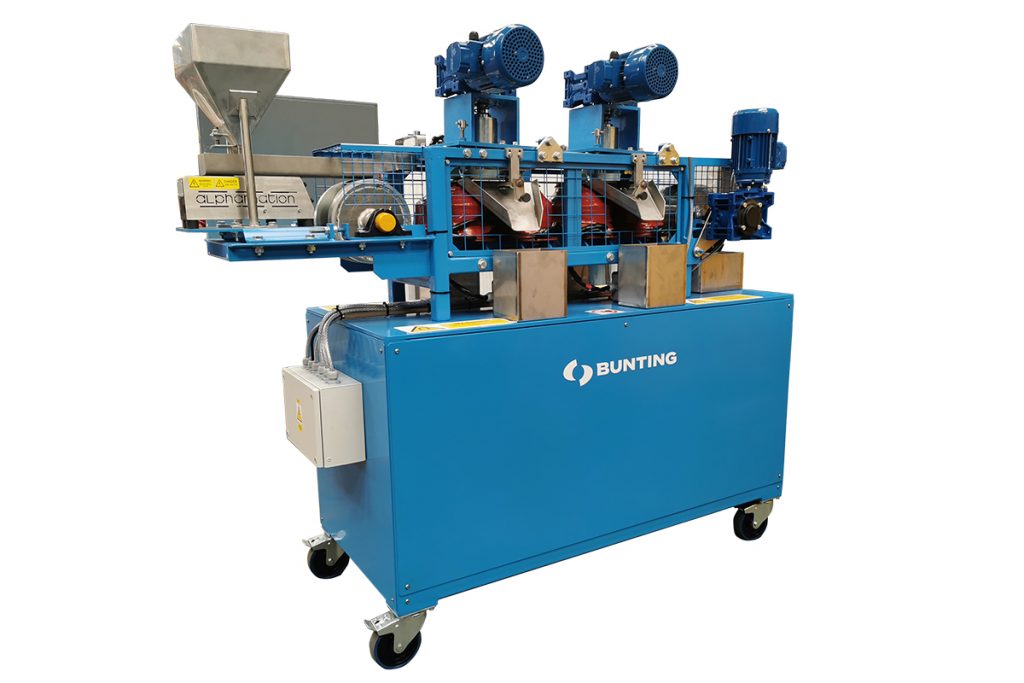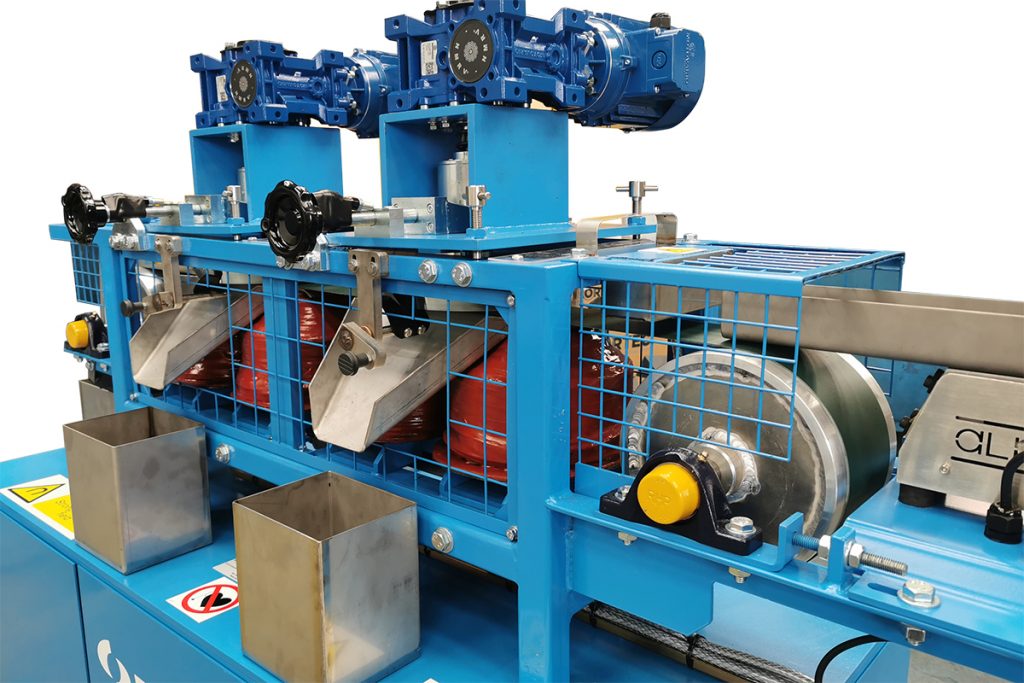Ilmenite Producer Purchases Magnetic Disc Separator
By Paul Fears | 27 July 2022
A European Ilmenite producer has purchased a 2-stage Magnetic Disc Separator (MDS). The mineral processor originally purchased their first Magnetic Disc Separator in 1995. The new magnetic separator will provide additional processing capacity as well as guaranteeing continual production.

The mineral ilmenite (FeTiO3) is mined for the production of titanium dioxide, which is commonly used as a white pigment in paints, surface coatings, plastics, and paper.
Ilmenite occurs as disseminated grains in basic igneous rocks or as larger ilmenite-magnetite or ilmenite-hematite segregations in gabbros and anorthosites. Ilmenite is commonly recovered from heavy mineral sands deposits where the mineral is concentrated as a placer deposit. The world’s largest ilmenite producing countries include Australia, South Africa, Mozambique, Canada, and India. Norway is the largest European producer.
High-Intensity Magnetic Separation
High-intensity magnetic separators recover and concentrate the weakly magnetic ilmenite from other non-magnetic minerals. For a dry process plant, many mining companies use the Magnetic Disc Separator.
- Technical product details – Magnetic Disc Separator
The Magnetic Disc Separator (MDS) is a separation system equipped with up to three independently working discs which generate magnetic field strengths up to 14,000 Gauss. The high magnetic forces generated by the MDS enable the extraction of paramagnetic particles from a free-flowing, dry product stream (100μm – 1.5mm).

The mineralogy of an ilmenite deposit dictates whether the process route is dry or wet, with a preference to dry due to the reduced environmental challenges of initially sourcing water and the management of wastewater. The ability to adjust the magnetic field of the discs in a Magnetic Disc Separator enables the mineral processor to tune the separation to produce a specific grade of ilmenite.
In operation, each Magnetic Disc is set at a specific magnetic field to separate a selected range of minerals in accordance with their magnetic susceptibility.
Bunting has a long-standing history of building and developing Magnetic Disc Separators and their design is widely regarded as one of the best in the world. Magnetic Disc Separators are used to process a wide range of industrial minerals including coltan (tantalum ore), beach sands, tin-ore, abrasives, and quartz for glass manufacturing.
Related Mineral Processing Technical Articles
Mineral Processing Testing Facility
The laboratory-scale Magnetic Disc Separator at Bunting’s Customer Experience Centre in Redditch, UK, is used to assess the magnetic separation capabilities on a wide range of mineral deposits. Globally-based mineral processing companies send material to the UK, where Bunting’s mineral processing engineers assess the optimum magnetic separation techniques to achieve a specific separation objective.
The laboratory is equipment with a wide range of equipment including:
- Smaller scaled versions of industrial Magnetic Separators. This equipment is used to accurately scale up to industrial capacities and calculate performance guarantees;
- X-Ray Fluorescence and X-Ray Diffraction analysis are available for chemical assay and mineralogical identification to aid the development of a viable process route for each application;
Magnetic Separators – Mineral Processing Laboratory
For further information on our range of magnetic separation equipment designed for mineral processing, or to arrange sample tests in our laboratory, please contact us on:
Email: Gordon Kerr at GKerr@buntingmagnetics.com
Telephone: +44 (0) 1527 65858
To keep up to date with our news and technical reports, please follow us on social media